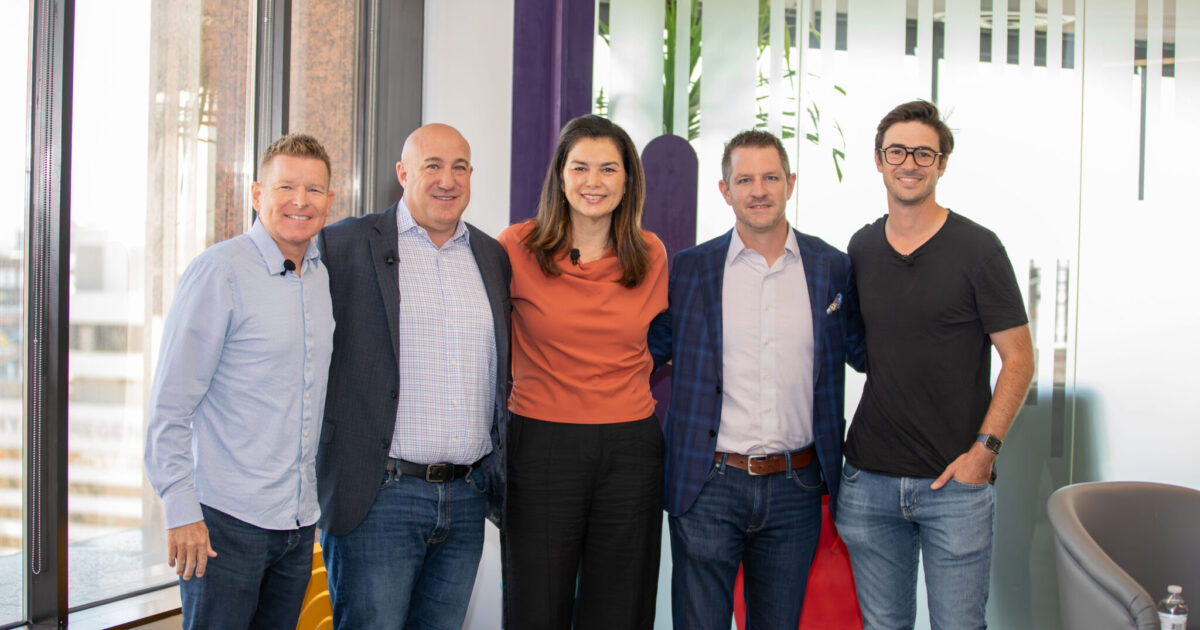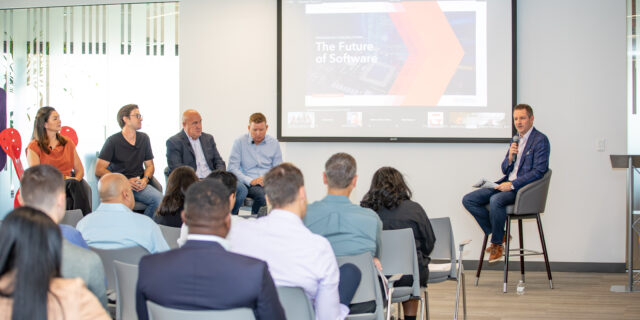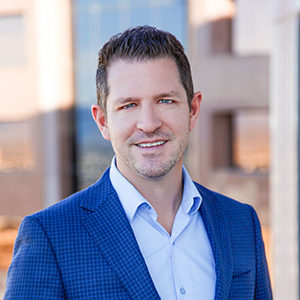

Ambassador Event: The Future of Software
Published: 11/05/2024
Greater Phoenix industry leaders shared insights into current trends and strategies driving the future success of the sector.
Greater Phoenix has emerged as one of the nation's fastest-growing technology hubs, with robust software and IT sectors comprised of customer success and service software operations, corporate software divisions, and developments in newer technologies.
In September, GPEC convened regional software leaders to explore trends and future opportunities in the sector and built a five-page industry report based on the insights from these discussions and up-to-date regional data. On Oct. 29, GPEC hosted its third Industry Series event, a moderated panel focused on the newly released future of software in Greater Phoenix report. The panel included:
- Heidi Jannenga, Co-Founder & Chief Clinical Officer, WebPT
- Anthony Kennada, Founder & CEO, AudiencePlus
- Aaron Matos, Founder & Executive Chairman, Paradox AI
- Gregg Scoresby, Founder and Managing Partner, PHX Ventures
- Chris Camacho, President & CEO, GPEC (moderator)
According to the report, Greater Phoenix has the second-largest tech employment base among five southwestern metros, with more than 96,000 jobs and 17.8% job growth between 2018–23. Arizona's low taxes and operating costs, pro-business policies, and supportive regulatory landscape ensure that companies have a strong potential for growth underpinned by the strategic location and high quality of life in the region.
Read more from The Future of Software Industry Report
A major driver for a thriving software sector is the venture capital (VC) ecosystem. Although Greater Phoenix continues to increase its VC funding, totaling more than $1.17 billion in 2023, the region has not reached the VC per-capita figures of some peer markets. Greater Phoenix has room to accelerate the development of its VC ecosystem through targeted programs, building upon the existing Angel Tax Credit program, and strategic marketing.
Greater Phoenix’s university base supports the growing demand for tech employment, with total tech jobs on par with competitor markets like Austin and Denver. To enhance its efforts in attracting and retaining tech talent, Greater Phoenix leaders should implement comprehensive initiatives that strengthen existing economic development tools and introduce new policies to bolster the region’s STEM workforce. “There is a compounding effect here that’s not really obvious on the outside, but the flywheel is turning in software in Arizona,” Scoresby said.
An evolving talent landscape
Cost of living and overall affordability, ease of commute, proximity to other western markets and talent availability in Greater Phoenix make it an attractive place to launch a business.
“People come here for more balanced lifestyles,” said Matos. “We should compete on what we have, which is a great place to work and live … being a great place to live is our strength as an economy.”
With Scottsdale-based Paradox achieving industry leading growth, Matos shared, the company has “been able to fish in a small pond and if you build something great, you can attract some of the best talent in the city, which is a competitive advantage.”
The software industry’s widespread adoption of remote work is a facet that could be both an advantage and challenge to Greater Phoenix along the path of establishing itself as a leading tech hub.
“There’s tons of hidden talent here: people that live here, but don’t work here,” said Scoresby. “We just need to be great at uncovering that talent and putting them to work in high growth companies. We have to be better at recruiting. When someone says, ‘Talent’s hard to find,’ my first inclination is to set it another way: ‘You're just not very good at recruiting.’”
“I think one of the hardest problems is that it’s really hard to relocate people today,” Matos said. “We used to relocate people all the time, but now some of our executive team is in Wisconsin, and in Michigan, and in Chicago. Their lives are there. They don't want to move. So you have a choice – you either hire the best talent in your industry or you hire the best talent in Phoenix. There’s a balance.”
The panelists also highlighted the need for better recruitment strategies and AI-enhanced productivity, along with the importance of leveraging local talent to foster growth in the software industry of Greater Phoenix, which has significant potential and unmatched assets, such as educational institutions. “ASU has the largest engineering program in the U.S.,” Scoresby said. “This year, there are probably 700 or 800 seniors in the computer science program and they’re working on a capstone project. These people should be starting companies here… We need to help some of the younger potential founders map into the local startup ecosystem.”
Strategies driving future industry success
GPEC’s Future of Software report identified two key strategies needed to continue industry growth and success: implementing strategic tech talent attraction and retention initiatives, and fostering a robust capital ecosystem.
The future of tech education
Along with improved recruitment strategies to attract talent from outside the state, new strategies in education could be implemented to prepare for the workforce of the future industry sectors.
“I hope education has a wave of massive entrepreneurial mindset integration that creates thinkers of risk,” Camacho said. Stimulating innovation and entrepreneurship through funding are key factors for modernizing education to meet future demand for tech skills.
From a product development perspective, Scoresby advocates for the growth of entrepreneurship skills to meet the demands of the sector’s tomorrow. “The future I want to see is more young people wanting to solve a problem in the world through entrepreneurship … How do we get more people to take risks on solving the most pressing problems in our local communities, in our state and in our country, through technology and through entrepreneurship.”
Another way in which Greater Phoenix can bolster its tech talent and education pipeline is through other key sectors in the region. “If you look at the [other] sectors that we have talked about, whether it's semiconductor, aerospace, autonomous vehicles, health and biosciences, data centers, these are all things that are going to serve AI and the disruption,” Jannenga shared, adding the connectivity would create “more opportunity to attract specific talent … and to have more talent that gets redistributed amongst many other companies.”
By capitalizing on these initiatives and unique regional advantages, Greater Phoenix can solidify its position as a premier destination for tech talent and innovation.
AI and the future of software
AI is significantly reshaping the software industry and workforce in Greater Phoenix with tools that enable professionals to work more effectively, but this could also lead to relocation of jobs in certain sectors.
“AI is going to be a superpower for top performers,” said Scoresby. “The next decade is going to be the most significant as far as productivity improvement in history. There’s probably going to be more revenue per employee. I don't think you're going to see massive unemployment, but I think there's going to be a rotation of new jobs, new opportunities and probably more interesting jobs. It is going to make our top performers even better.”
In addition to the relocation of job count, AI will continue to impact the remote work trend. “We have done a lot of our recruiting locally here,” Kennada said. “What we found is most of them are living here, but are working remote. I do think there is a pull to get back to the office, but it is just so hard because of that cultural norm that now exists. The AI SDR [Sales Development Representative] in particular is going to be potentially pretty disrupted in terms of job count, but it also depends on the sector,” he added.
On the other hand, the benefits of AI in enhancing knowledge growth and career development are noticeable. “There is significant disruption that is going to be happening in the SDR space, but … there is a lot of mobility upward for these folks,” Jannenga said.
Kennada also sees AI as “the delivery vehicle, as the big platform shift” for the future of software. “I see an opportunity, given the semiconductor work and the traction and the momentum already there, for [Greater Phoenix] to be a region that really helps power this next generation for computing on the infrastructure side,” he said. “You can't build a bunch of data centers in downtown San Francisco. But we have an opportunity to really help power what is going to be an extremely disruptive but also very productive kind of time for our modern economy.”
The region’s growing tech ecosystem, coupled with a favorable business climate, positions it to capitalize on the advancements in AI. “Semiconductor, aerospace, autonomous vehicles, health and biosciences, data centers are all areas that are going to serve AI and are uniquely set up for disruption, and software is just going to empower all those things along with AI,” Jannenga said. ”We are at the forefront of all of these areas that we're going to really rely on in the future.”
Watch this space for GPEC’s monthly Industry Series event recaps and learn about eight key sectors shaping the region.
Meet the Panel
Heidi Jannenga
Co-Founder & Chief Clinical Officer
WebPT
Anthony Kennada
Founder & CEO
Audience Plus
Aaron Matos
Founder & Executive Chairman
ParadoxAI
Gregg Scoresby
Founder and Managing Partner
PHX Ventures
Chris Camacho (Moderator)
President & CEO
GPEC





